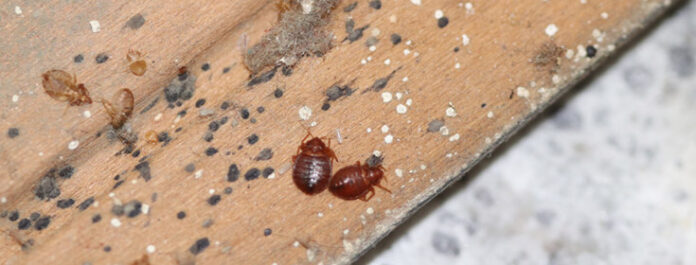Bed bugs can travel on furniture, bedding, luggage, cartons, clothing, and other items to get from one infested location to a new house.
Although bed bugs normally feed on blood every five to ten days, they can be fairly hardy and can go for up to a year without eating.
#1 Pest Control & Bed Bug Exterminator in New York NY , is constantly prepared to safeguard your home against bed bug infestations.
Continue reading to get crucial advice on how to avoid bed bug infestations.
Tips for Preventing Bed Bugs in Your Home
1) Before moving used sofas, mattresses, or other furniture into your home, look for any indications of bed bug infestation.
2) Don’t panic!
Bed bug eradication can be challenging, but it’s not impossible. Don’t toss everything out because the majority of it may be repaired and kept. Throwing things away costs money, increases stress, and could transmit bed bugs to other people’s homes..
3) Eliminate the clutter and lessen the amount of hiding places.
Bed bugs can hide in more places in a messy home, which also makes finding and treating them more difficult. If you use special bed bug covers (encasements) on your mattress and box springs, bed bugs will have a difficult time getting to you while you sleep.
4) Laundry baskets and hampers are common places for bed bugs and their eggs to hide.
When doing laundry, keep in mind to clean them. Wash and heat dry your blankets, sheets, bedspreads, and whatever other apparel that comes in contact with the floor.
5) Don’t spread bed bugs to others.
Bed bugs make good hitchhikers. If you toss away a mattress or piece of furniture that has bed bugs in it, you should cut it up or otherwise destroy it to prevent someone else from taking it and getting bed bugs.
6) Sealing cracks and crevices around baseboards, light sockets, etc. to prevent movement into wall voids.
7) With heat, bed bugs can be killed, but use extreme caution.
Effective heat treatment requires specialized tools and extremely high temperatures. If the contents of black plastic bags heat up enough, they may be able to kill bed bugs. When bed bugs reach 45 °C (113 °F), they are killed. Think about getting a portable heating chamber.
8) In order to decrease bites, diminish the bed bug population.
Some bed bugs can be eliminated by a thorough cleaning. Clean every nook and cranny in the room, including the rugs, floors, upholstered furniture, bed frames, under the mattresses, and under the bed’s legs. For the bed bugs to be unable to escape, replace the bag after each use. The used bag should be placed in a plastic bag that is properly sealed and outdoors in a garbage can. Regularly vacuum to get rid of any hitchhikers who make it home.
9) Consult with experts as necessary.
You can improve your chances of successfully getting rid of bed bugs by hiring a seasoned, responsible pest control specialist. When hiring an expert, make sure the firm has a strong reputation and ask that it adopt an (Integrated Pest Management)
IPM strategy. If you need advice on selecting reputable pest treatment firms, get in touch with your state’s pesticide department.
Conclusion
Do-it-yourself Bed bug control by freezing might not be effective.
It takes a long time and extremely low temperatures to kill bed bugs, despite the fact that freezing can do it. Since home freezers might not be cold enough to kill bed bugs, take an accurate temperature reading using a thermometer. Leaving things outside in below-freezing temperatures may be able to eradicate bed bugs, but the efficiency of this method depends on a number of factors.































